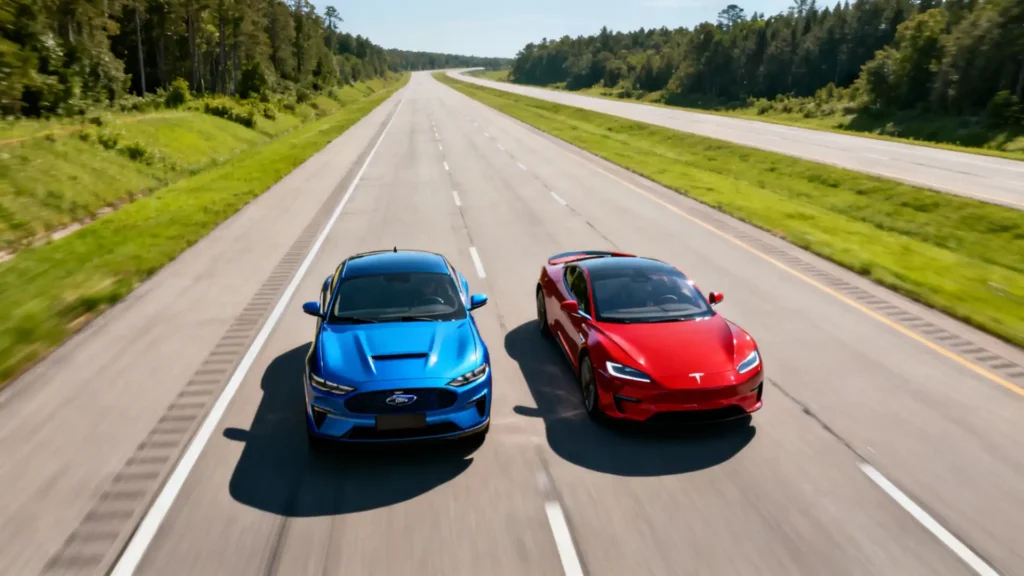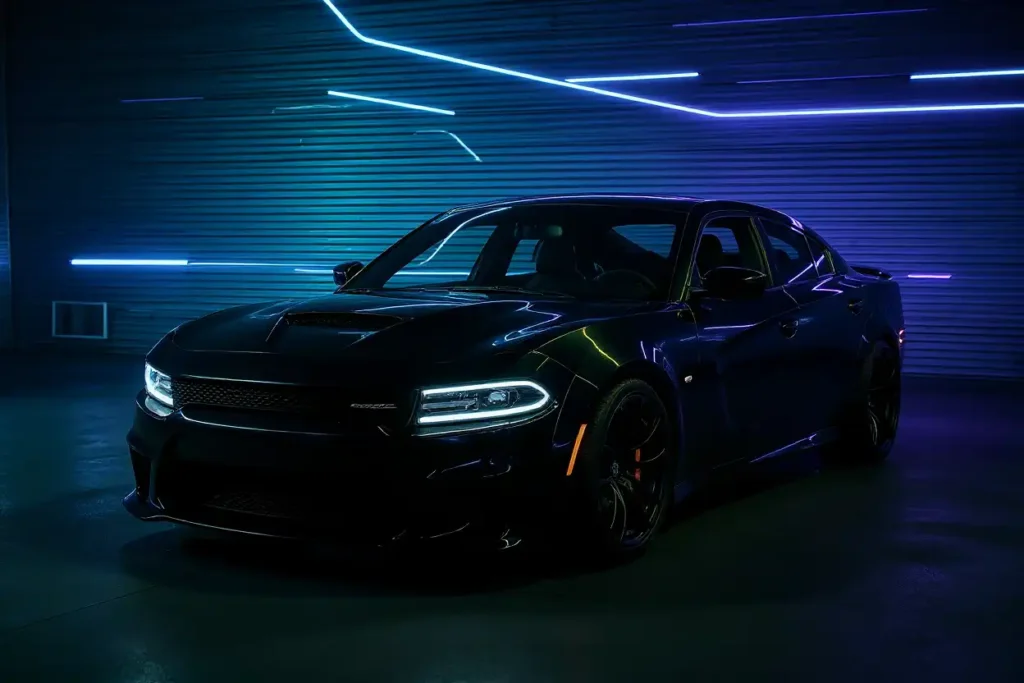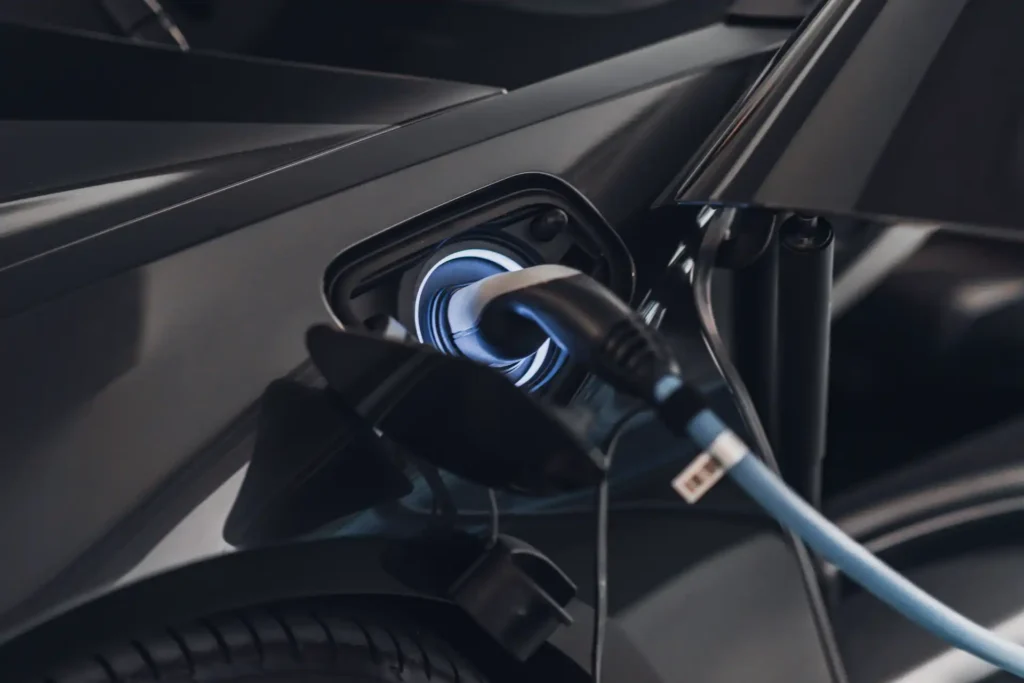For decades, the roar of a V8 engine symbolized freedom, power, and American ingenuity. From the Ford Mustang to the Dodge Challenger and Chevrolet Corvette, muscle cars have long defined the nation’s automotive identity. But today, a new sound—or rather, the absence of one—is redefining that legacy. Welcome to the era of electric American sports cars, where silence meets speed, and performance meets sustainability.
The Shift from Muscle to Megawatts
The transformation didn’t happen overnight. It began with hybrids and experimental concepts that hinted at an electric future. General Motors’ decision to develop the Corvette E-Ray marked a turning point, blending a traditional V8 engine with a high-output electric motor. Soon, Ford followed with the Mustang Mach-E GT, an all-electric crossover that shocked purists yet impressed with its torque and handling.
Now, brands like Dodge and Tesla are taking it further. The Dodge Charger Daytona EV combines instant electric acceleration with synthetic engine acoustics, giving muscle car fans their familiar growl while embracing clean technology. Meanwhile, Tesla’s Roadster 2.0 promises a staggering 0-60 mph time under 1.9 seconds, proving that the future of speed belongs to electrons, not gasoline.
Why the U.S. Is Leading the EV Performance Charge
While European and Asian automakers like Porsche and Hyundai launched early EV sports models, the United States has caught up—fast. Government incentives, stricter emissions regulations, and growing consumer demand for sustainable vehicles have sparked a performance revolution. According to the U.S. Department of Energy, the EV market grew more than 50% in the last two years, and performance-oriented electric cars represent a significant portion of that growth.
American innovation thrives on competition. Ford, GM, Tesla, and even startups like Lucid Motors are pushing boundaries in design and technology. The result: electric vehicles that are faster, smarter, and more connected than ever before. These cars don’t just compete with European supercars—they often beat them on acceleration, efficiency, and price.
Top Electric American Sports Cars Defining the Decade

- Chevrolet Corvette E-Ray: The first electrified Corvette combines all-wheel drive, hybrid technology, and a roaring V8 engine for unmatched balance between classic power and modern efficiency.
- Dodge Charger Daytona EV: With the innovative Fratzonic Chambered Exhaust system, it gives electric cars an emotional soundtrack while delivering 800-volt charging capability and stunning design.
- Ford Mustang Mach-E GT: The GT Performance Edition’s dual motors deliver 480 horsepower and sub-4-second acceleration while offering space and everyday usability.
- Tesla Roadster 2.0: With a rumored 620-mile range and rocket-like acceleration, Tesla’s halo car aims to redefine what electric performance can achieve.
- Lucid Air Sapphire: Although technically a luxury sedan, its 1,200+ horsepower powertrain and tri-motor setup place it squarely in supercar territory.
Performance Without the Pump
For decades, horsepower was the currency of performance. Now, torque is king. Electric drivetrains deliver maximum torque instantly, eliminating turbo lag and gear shifts. The result is blistering acceleration that no internal-combustion engine can match. Additionally, battery placement lowers the center of gravity, improving cornering and stability.
Drivers of electric American sports cars enjoy both speed and serenity. No gear changes, no vibration, just smooth, continuous thrust. Regenerative braking also returns energy to the battery, improving efficiency and offering a new kind of driving control. For enthusiasts, it’s a different thrill—but one that still gets your heart racing.
Challenges Facing Electric Sports Cars
Despite rapid progress, several challenges remain. Battery weight is a major factor; even lightweight EVs can exceed 4,000 pounds. Manufacturers are addressing this with next-generation solid-state batteries that promise higher energy density and reduced mass.
Another issue is charging infrastructure. While California leads the nation with extensive EV charging stations, long-distance driving remains tricky in rural areas. Automakers and federal initiatives are rapidly expanding the network, aiming to make fast charging as common as gas stations by 2030.
Then there’s the emotional factor—the loss of the visceral sound and feel of a traditional engine. Yet, companies like Dodge are addressing this with artificial exhaust systems that recreate the symphony of combustion power. It may not be the same, but it shows how deeply American manufacturers value driving emotion.
The New American Aftermarket
The rise of EVs is also reshaping car culture. Enthusiasts who once swapped carburetors and exhausts now experiment with software tuning, over-the-air performance updates, and aerodynamic modifications. Customizers are even converting vintage muscle cars into EVs—blending nostalgia with cutting-edge technology.
Shops specializing in electric conversions have sprung up nationwide, offering resto-mod packages for classics like the 1967 Mustang or the Chevy Camaro SS. The idea of preserving design heritage while eliminating emissions appeals to a new generation of car lovers.
Environmental and Policy Impacts
California’s zero-emission mandate for 2035 is a major driver behind this transformation. Automakers must adapt or risk being left behind. With more federal incentives available for EV buyers and manufacturers, electric sports cars are becoming not just viable but inevitable. The focus is shifting from “Can we make them fast?” to “How fast can we make them sustainable?”
Electric propulsion also promises lower long-term maintenance costs—no oil changes, fewer moving parts, and minimal mechanical wear. This makes EV ownership appealing not only for environmental reasons but also for practical ones.
Do Enthusiasts Still Crave the V8?

There’s no denying the nostalgia tied to the smell of fuel and the growl of a big-block engine. However, the thrill of instant torque, blistering speed, and the high-tech sophistication of EVs is winning hearts fast. Once drivers experience 1,000 lb-ft of torque at zero RPM, the emotional attachment to old-school engines starts to fade.
The essence of American performance has always been innovation—from carburetors to superchargers, from mechanical to digital. Electricity isn’t the end of the muscle-car era; it’s its evolution.
Economic Impact and Future Outlook
Major investments from U.S. automakers are creating jobs and revitalizing manufacturing hubs in Michigan, Ohio, and California. The EV boom is breathing new life into American carmaking, ensuring it remains a global force in performance and design. Experts predict that by 2035, half of all U.S. sports cars will feature either hybrid or fully electric powertrains.
Furthermore, EV technology is democratizing performance. Electric drivetrains make it easier for manufacturers to deliver supercar acceleration in affordable models. The concept of “everyday performance” is becoming reality, meaning the average buyer can now experience thrills once reserved for exotic brands.
Conclusion: A New Era of Speed
The rise of electric American sports cars represents not the end, but the evolution of automotive excitement. From the Corvette E-Ray to the Tesla Roadster, innovation continues to drive the American spirit forward. The road ahead is charged—literally and figuratively—with opportunity, performance, and pride.
Whether you’re a lifelong gearhead or a newcomer to the EV scene, the message is clear: the future of American performance is electric. And it’s faster, cleaner, and more thrilling than ever before.
Continue exploring related posts like The Evolution of American Muscle Cars and Modern American Sportscars That Compete with the World’s Best to see how tradition and innovation collide on the road ahead.
